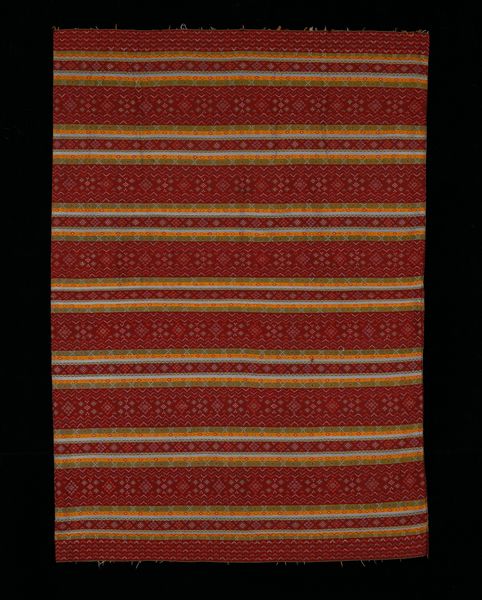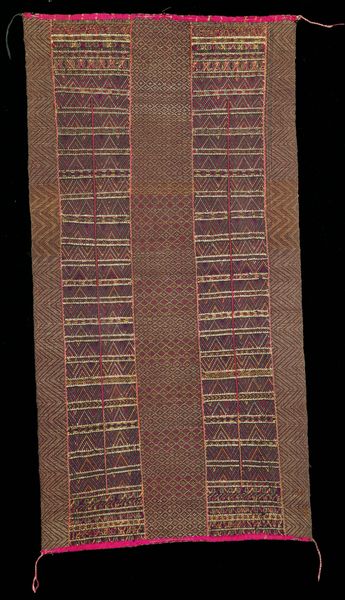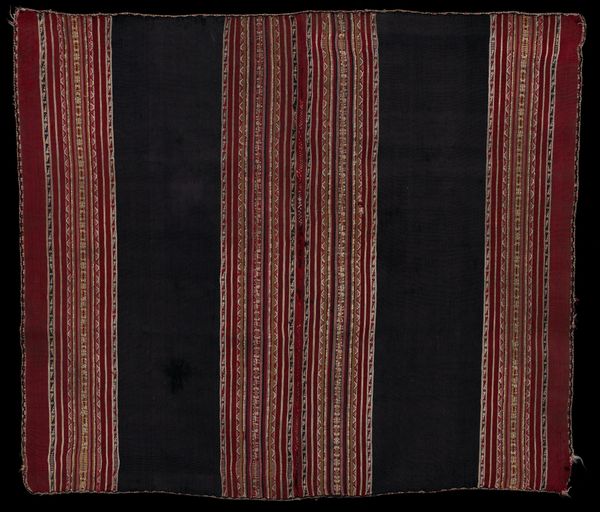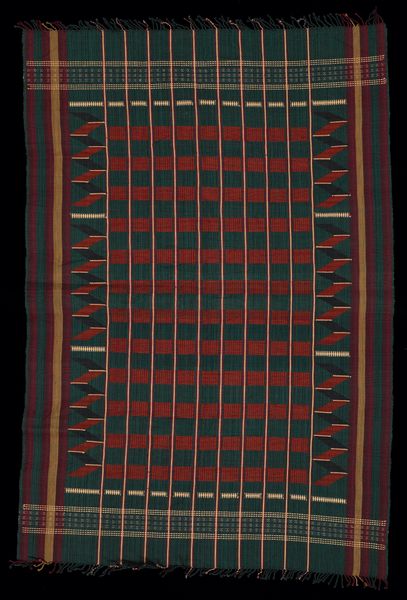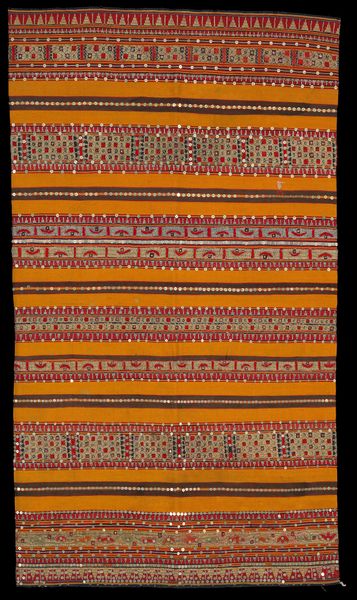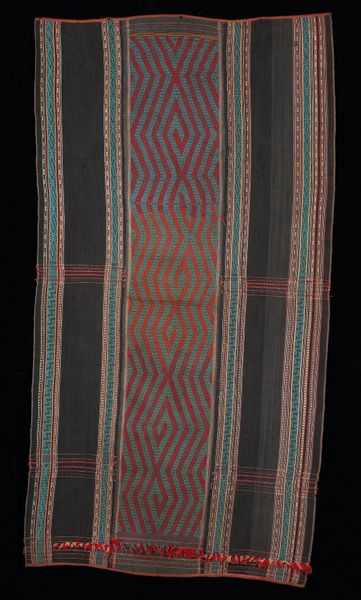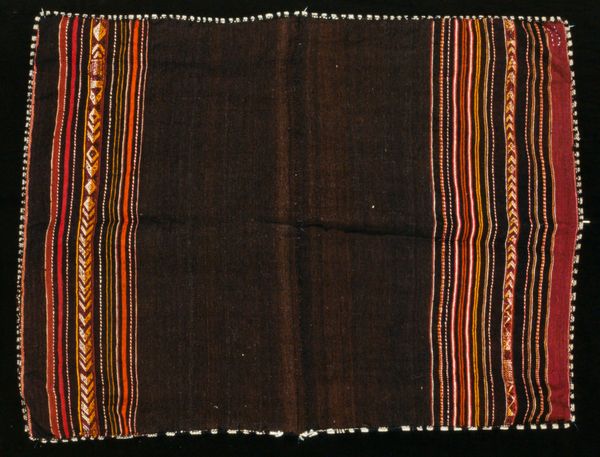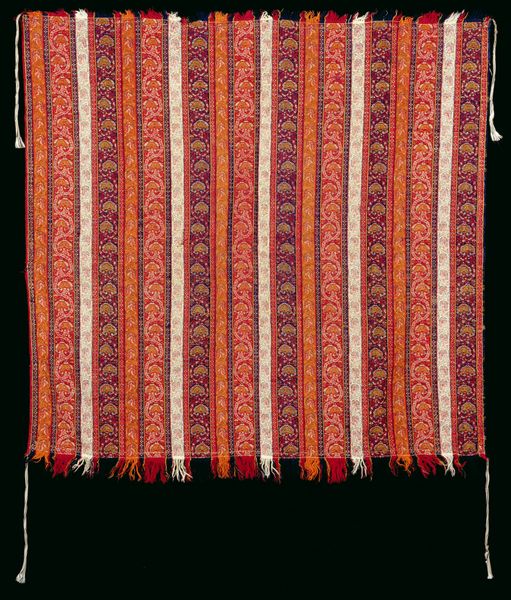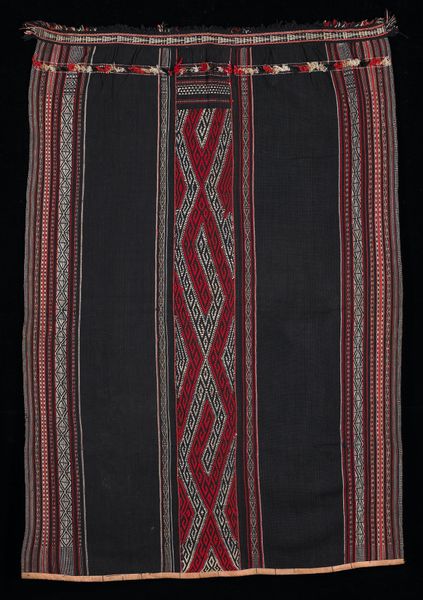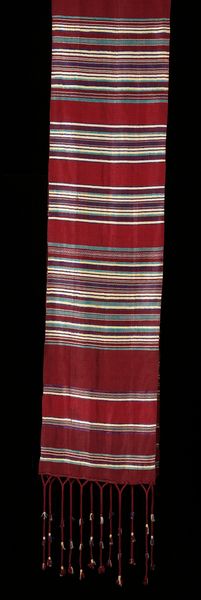
weaving, textile
#
weaving
#
textile
#
geometric pattern
#
hand-embroidered
#
pattern design
#
minimal pattern
#
geometric
#
repetition of pattern
#
regular pattern
#
pattern repetition
#
textile design
#
layered pattern
#
combined pattern
Dimensions: 29 3/8 x 13 1/4 in. (74.61 x 33.66 cm)
Copyright: Public Domain
Curator: Ah, a wonderful example of textile art. This is a "Panel," crafted in the 20th century. The materials are cotton, and it's currently held here at the Minneapolis Institute of Art. Editor: My first impression? It’s unexpectedly… calming. I expected more visual noise from all the geometric patterns, but it’s actually quite meditative. The colors, muted reds and blacks, give it an earthy feel. Curator: That meditative quality likely stems from the repetition of patterns, a hallmark of pattern-and-decoration. It moves past mere surface decoration to evoke cultural narratives through materials, labor, and artistic expression. We see this impulse rejecting a rigid canon that values certain histories or peoples. Editor: Hmm, I hadn't thought of it as rejecting anything. More like embracing… something primal? Like, before writing, maybe this *was* the writing, encoding stories in each carefully stitched diamond and zig-zag. The tiny color stitches add a little burst, tiny moments within each vertical line. Almost joyous! Curator: It's true. It’s easy to see how the emphasis on surface and materials pushed back against a long-standing hierarchy of genres within art institutions—where painting, sculpture, "high" art always overshadow applied arts, design, craft...especially women's work! Pieces like this "Panel" demanded equal consideration and value. Editor: Demanded is right! I imagine someone bent over this piece for months, years even, the rhythm of the needle, a conversation with each stitch. How easily we forget all the unnamed art makers of history... What untold sagas rest in pieces like this? I would love to feel it in my hands, and to see it worn! Curator: I appreciate your connection to the labor inherent in this piece. By examining its place in art history, we gain a deeper appreciation of the artistic landscape—but by relating to it emotionally and personally, it helps us recognize the power of art and to acknowledge the hands, time and purpose that produced them. Editor: Absolutely! You know, I came in thinking, "pretty fabric," but I am leaving thinking about the women who make our worlds more beautiful, stitch by stitch. And questioning who gets remembered for it! Curator: Precisely. That's why studying art, or indeed living with art, provides such ongoing insight. Thank you.
Comments
No comments
Be the first to comment and join the conversation on the ultimate creative platform.
